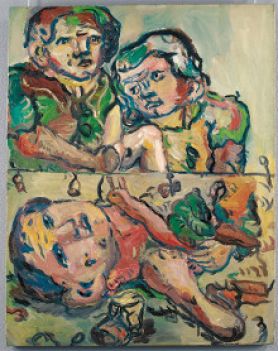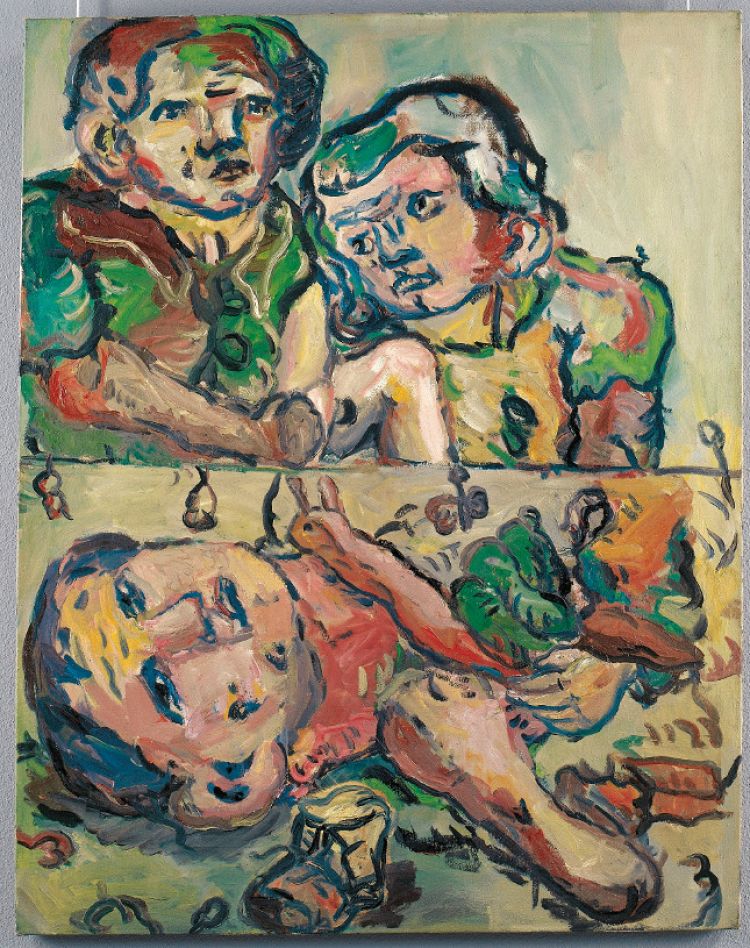Drei Köpfe mit Schnecke

Expelled from the East Berlin School of Art for "political immaturity", Georg Baselitz moved to what was then West Germany in 1956. With Eugen Schoenebeck, he co-signed the manifesto Pandemonium in 1961, and participated from 1980 in the movement Neue Wilden (New Savages). In an expressive tradition specific to German art, the painter asserts what he calls an "aesthetics of ugliness". He thus rejects expertise and mastery in order to reach an imagery of violence, free from all academicism. His aim is also to invent painting at the boundary between the abstract and the figurative. In 1969, he painted his first painting with an upside down motif. Most of those that follow were made using the same approach. For the artist it was a question of emancipating himself from models and reality, while maintaining for the viewer the possiblity of identification.
Drei Köpfe mit Schnecke, an image divided into two perspective planes, is one of the first works in his series of "Fracture" paintings. By choosing dissonant colours, by associating snails with repulsive body fragments, the artist demonstrates his rejection of the criteria of good taste and moves away from any attempt at visual and narrative seduction. The colour green and the dirty red refer to the trauma of war. The mutilated appearance of the bodies, the frontality of the upper part of the image, the horizontality of the lower and the appearance of abstract patterns in both parts give a hallucinatory character to these compositions.
